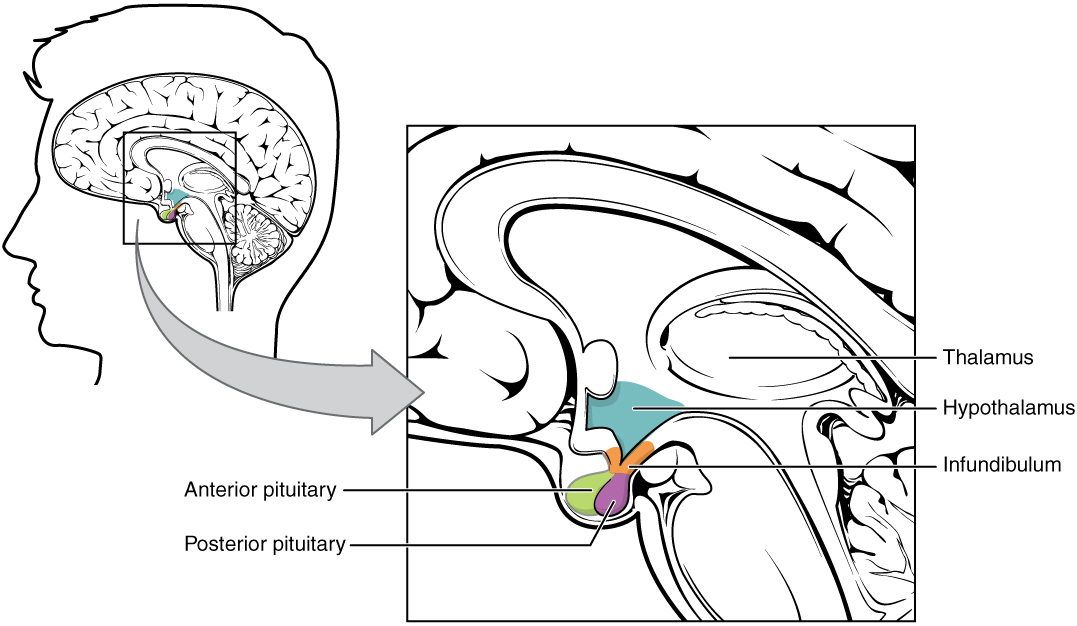Playlist
Show Playlist
Hide Playlist
Cell Types
-
Slides CellTypesHormones EndocrinePathology.pdf
-
Download Lecture Overview
00:01 Let?s take a look at the anterior pituitary. 00:03 Now, what we have here is a structure of the anterior pituitary and all the different hormones that come out of it, but it?s not important that you memorize the locations of it. 00:15 But, what I do want you to pay attention to would be specifically these melanotropes and lactotropes. 00:22 The reason for that is because in terms of its origination of the hormones from the anterior pituitary, which by the way develops embryologically from the Rathke?s Pouch and that is something that you want to keep in mind. 00:36 Absence of the Rathke?s Pouch, you end up losing or do not develop the anterior pituitary. 00:43 But, the somatotropes and the lactotropes become important and when we get to our discussion of somatotropes, we are not and you are not going to confuse that with somatostatin, even though the prefix might sound similar. 01:00 Keep that in mind. 01:01 Also, when we come to histology, it?s important that you pay attention to the type of staining method that takes place. 01:10 And by that, I mean the two major staining methods include acidophils and basophils or acidophilic and basophilic. 01:20 And I will show you picture upcoming in which you notice here in the picture, that S and L are put together. 01:29 And they?re in the same vicinity. 01:31 And so, therefore, the type of stain that they didn?t take up would be, once again, similar versus all of the others that then have a different type of staining and that is then referred to as being basophilic. 01:45 And what does that mean? Well, when you say acidophilic, as we shall see, the colour of it or the staining of it will then be rather pinkish. Whereas if it's basophilic, and you've seen it over and over again. 01:59 That would be rather dark, wouldn't it? Dark blue purple is what you're thinking of. 02:04 Somatotropes and lactotropes is what you?re paying attention to and after you compartmentalize this, at some point in time, understand the anterior pituitary is going to completely mix all this up. 02:16 And so, therefore, it might look something like this. 02:20 And what this image is pointing to is... are your pink acidophils. 02:25 And if I were you, I?d focus upon these two, the S and the L, and the S referring to, not somatostatin, but somatotropines. 02:35 Now, where this becomes important is, if I were you and reading a stem of a question, it?s a physio or anatomy or embryologic question, whenever you see the suffix -tropic or -trop, it means promotion, promoting. 02:50 So, whenever you hear the word tropic, it always means releasing versus inhibiting. 02:58 And so, therefore, somatotropes would be those that then give rise to growth hormone whereas your lactotropes will be prolactin and by that, you should be thinking prolactin?s responsible for milk synthesis, right? So, therefore, it would be a contributing factor when it comes to breast-feeding and milk. 03:19 Milk referring to lacto, if that helps you. 03:24 Whereas all of the rest would be dark, purplish, basophilic and by that, I mean rest of the anterior pituitary hormones. 03:33 Remember please, that in this section, all that we?re referring to is the anterior pituitary. 03:39 We already had our discussion when dealing with the posterior pituitary and its clinical applications.
About the Lecture
The lecture Cell Types by Carlo Raj, MD is from the course Pituitary Gland Disorders.
Included Quiz Questions
What gives rise to the anterior pituitary?
- Rathke's pouch
- Adenohypophysis
- Pars intermedia
- Buccopharyngeal membrane
- Mesencephalon
Which pituitary cells are acidophilic?
- Lactotropes
- Corticotropes
- Gonadotropes
- Thyrotropes
- Cells that stain dark purple
Which cell type is not correctly matched with its associated hormone?
- Lactotropes — follicle-stimulating hormone
- Somatotropes — growth hormone
- Thyrotropes — thyroid stimulating hormone
- Gonadotropes — luteinizing hormone
- Corticotropes — adrenocorticotropic hormone
Customer reviews
5,0 of 5 stars
| 5 Stars |
|
5 |
| 4 Stars |
|
0 |
| 3 Stars |
|
0 |
| 2 Stars |
|
0 |
| 1 Star |
|
0 |





